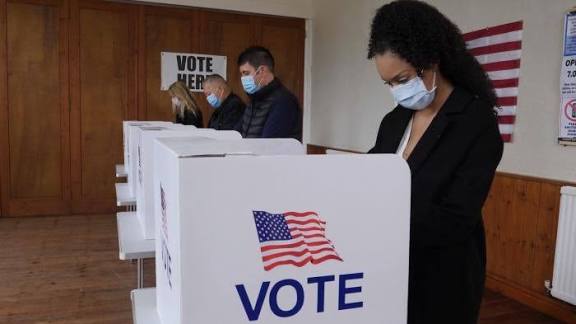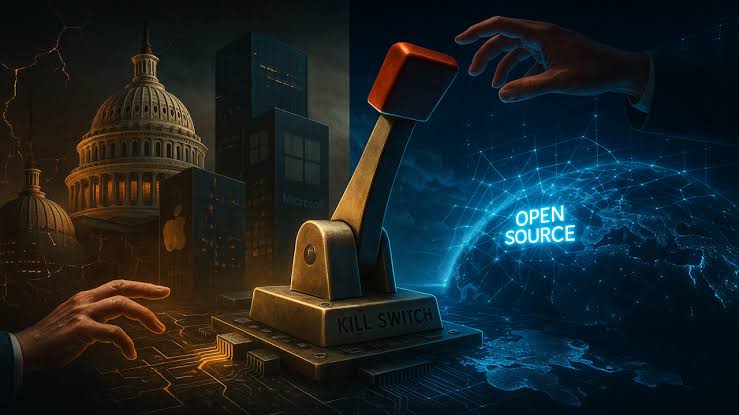New Immigration Crackdown Shocks America: Communities Fear Next Moves

Recent news reports describe intensified US immigration crackdown as of November 2025. Today we will discuss about New Immigration Crackdown Shocks America: Communities Fear Next Moves
New Immigration Crackdown Shocks America: Communities Fear Next Moves
In 2025, the United States has witnessed an aggressive surge in immigration enforcement under the current administration. What many once viewed as a fringe policy has now morphed into a sweeping crackdown — a series of executive orders, large-scale raids, and legal changes that are sowing fear in immigrant communities and overwhelming cities that have long resisted such heavy-handed tactics. As Americans watch, critics, activists, and ordinary people are asking: What comes next?
This new wave of aggression is more than just a political maneuver. It’s reshaping the social fabric of local communities, disrupting lives, and raising profound questions about civil liberties, constitutional protections, and America’s role as a safe haven.
A Turning Point: Key Policy Moves Behind the Crackdown

Several major policy changes and enforcement operations are driving this crackdown. These are not isolated incidents — they form a coordinated strategy with deep implications.
Executive Order 14159 – “Protecting the American People Against Invasion”
On January 20, 2025, President Trump signed Executive Order 14159, which expands the use of expedited removal (deportation without a court hearing), denies federal funding to sanctuary jurisdictions, and imposes criminal and civil penalties for undocumented immigrants who fail to register.Operation Safeguard
A key operational tool in this crackdown, Operation Safeguard, is aimed at rapidly detaining undocumented individuals, particularly in urban areas, and expelling them. According to ICE documents, the plan targets people with criminal histories and has sparked major concern, especially among local leaders in cities like Chicago.Operation Midway Blitz
In Chicago, Operation Midway Blitz has become emblematic of the escalation. Hundreds of DHS and ICE agents teamed up with the National Guard in early September 2025 to conduct mass arrests of immigrants in a city known for its “sanctuary” policies. The operation has further strained relations between local and federal authorities.Withdrawal of “Sensitive Locations” Protections
The 2011 policy that protected spaces like schools, hospitals, and places of worship from ICE raids has been rescinded. This means that places once considered off-limits are now open for enforcement, terrifying immigrant families who once felt safe in these sanctuaries.Fast‑Track Deportations
The administration is pushing a policy that allows deportations without a hearing or due process. Legal advocates argue this strips away basic protections and could lead to wrongful expulsion even of those who have made repeated court appearances.
Ground-Level Impact: Fear, Panic, and Uncertainty
The ripple effects of this crackdown are being felt across U.S. cities, from small towns to sprawling metropolises. Immigrant communities are living in a state of perpetual tension, with many bracing for the next round of enforcement.
Schools and Families
The removal of “sensitive location” protections has left immigrant families deeply unsettled. Many students are skipping school, and attendance is dropping in districts with large immigrant populations.
One immigrant mother shared, “I don’t sleep … I worry they’ll come for my child’s school or at night.” The fear of ICE showing up in places once considered safe is not just theoretically chilling — for many, it’s a lived reality.
Sanctuary Cities Under Siege
Sanctuary cities like Chicago and New York are at the epicenter of this crackdown. Officials in these jurisdictions have historically limited cooperation with federal immigration enforcement, but now face lawsuits, funding threats, and even criminal investigations.
For example, the Justice Department is reportedly preparing criminal referrals against state and local officials who resist federal immigration commands. In Chicago, the administration has sued the city and state, claiming their sanctuary policies obstruct immigration enforcement. These legal battles reflect deepening confrontation between federal power and local autonomy.
Protests and Political Resistance
Communities are not accepting this quietly. In Portland, Oregon, protests have erupted outside ICE offices, decrying the aggressive detention tactics. In Chicago, religious organizations and immigrant rights groups have organized around Operation Midway Blitz, offering mutual aid, legal support, and safe spaces for those living in fear.
Meanwhile, in Los Angeles, the Supreme Court’s decision to lift restrictions on “roving” immigration patrols has drawn sharp criticism. Civil rights advocates warn that this effectively legalizes profiling and could lead to racially biased stops of Latino individuals.
Economic Fallout
The crackdown isn’t just social — it’s economic. Immigrants are altering spending patterns driven by fear. In central U.S. communities, restaurants, salons, and small businesses frequented by immigrant populations are reporting sharp declines.
Agricultural sectors, heavily dependent on undocumented labor, are also sounding alarms. Farmers warn that mass deportations are destabilizing harvests and labor supply. A recent study modeled the economic fallout of ICE raids in Oxnard, California — estimating a potential 20–40% drop in agricultural labor, $3–7 billion in crop losses, and a 5–12% increase in produce prices.
Remittances Surge Amid Anxiety
As fear grips immigrant families, many are sending more money home — a coping mechanism in uncertain times. Remittance centers, especially in cities with large Central American communities, are bustling. These financial flows reflect a strategy: if deportation comes, at least some funds are already out of reach.
Legal Challenges and Rising Advocacy
Civil rights groups are mobilizing. The ACLU, New York Civil Liberties Union, and other organizations have filed lawsuits to block the administration’s fast-track deportation policy.
New immigrant-rights coalitions are emerging to provide legal aid, educate communities about “know-your-rights” practices, and monitor ICE activity. As one activist put it, “Fear is the point” — and the fightback is gaining momentum.
Broader Implications: Democracy, Rights, and Identity
The current crackdown raises alarm bells far beyond immigrant communities. It touches on fundamental questions about U.S. democracy, constitutional freedoms, and national identity.
Civil Liberties Under Threat
By enabling deportations without hearings and removing protections for sensitive locations, the administration is eroding due process. Critics warn that this creates a class of people — including long-term undocumented residents — living in constant legal limbo.
Further, the Supreme Court’s decision to let “roving” immigration patrols resume invites racial profiling, according to experts. When law enforcement can stop people based on race, language, or employment type, the potential for abuse is enormous.
Local vs. Federal Tension
The crackdown underscores a growing power struggle between the federal government and sanctuary jurisdictions. Cities like Chicago, which have long resisted ICE cooperation, are now being forced into a confrontation.
This fight isn’t just symbolic: it’s about who controls public safety, who funds communities, and who decides how law enforcement operates on local soil.
Economic and Social Fabric
Removing large numbers of undocumented workers threatens key sectors of the U.S. economy — agriculture, hospitality, construction, and more. The social cost is equally staggering: broken families, children separated from parents, and long-established communities destabilized.
Cultural traditions are also at risk. Attendance at community festivals has dropped sharply, as families stay home rather than risk attention from ICE.
What Communities Are Doing: Resistance, Resilience, and Adaptation
Despite the fear, immigrant communities are not giving in. Across the country, people are organizing, resisting, and adapting in creative ways.
Legal Advocacy and Litigation
Activist groups are pushing back in court, filing motions to block fast-track deportations and challenge other aggressive policies.Community Organizing
Grassroots groups are hosting “know-your-rights” workshops, setting up hotlines for ICE sightings, and coordinating sanctuary network support. In Chicago, faith groups are at the forefront of this organizing.Economic Coping Mechanisms
Families are sending remittances home earlier, setting aside savings, and pooling resources. Small businesses are forming coalitions to support workers, offering legal clinics, and creating safe spaces.Public Protest and Political Pressure
Protests in cities like Portland and Los Angeles are drawing national attention. Politicians in sanctuary jurisdictions might double down on resistance, potentially igniting a national debate over immigration, sovereignty, and civil rights.Media and Awareness Campaigns
Immigrant rights groups are amplifying voices through media, pushing back on false narratives, and working to humanize the lived experiences of people caught in this crackdown.
The Road Ahead: What Could Happen Next
As the crackdown intensifies, several scenarios could play out — each with significant implications.
Further Militarization
The deployment of federal agents, National Guard troops, and armored vehicles could expand. Already, reports suggest the involvement of military-style tactics in ICE operations.Widening Legal Battles
Sanctuary jurisdictions might ramp up their legal challenges. We could see more lawsuits against the federal government over funding cuts, executive orders, and operational overreach. These battles may shape the future contours of local-federal authority.Economic Disruption
Continued deportations could severely disrupt labor markets. Sectors that rely heavily on undocumented workers (like agriculture) could face labor shortages, pushing up prices and destabilizing supply chains.Social Polarization
Fear and mistrust may deepen between immigrant communities and law enforcement. This could erode social cohesion, stoke racial tensions, and exacerbate divisions in cities already grappling with inequality.Political Consequences
As the immigrant rights movement mobilizes, politicians may be forced to take stronger positions. Local leaders in sanctuary cities might double down on resistance, potentially igniting a national debate over immigration, sovereignty, and civil rights.
Why This Matters: The Stakes Are High
This crackdown isn’t just about immigration policy — it’s about the soul of America.
Human Rights: People are being deprived of due process, facing detention without hearing, and living in constant anxiety. The rollback of protections for sensitive locations threatens fundamental human dignity.
Democracy: The tension between federal and local governments raises the question of who governs our neighborhoods. If federal power trumps local values, what happens to democracy at the grassroots?
Economy: Immigrants are integral to many sectors. Destabilizing their lives and livelihoods doesn’t just hurt individuals — it hurts entire industries, supply chains, and local economies.
Social Justice: The potential for racial profiling, especially after the Supreme Court ruling on roaming patrols, is deeply troubling. The fear that stops will be based on race or language undermines civil liberties.
Identity: Immigrants have long been woven into the U.S. narrative as builders, innovators, and neighbors. This crackdown threatens to unravel that story, replacing it with fear, exclusion, and division.
Conclusion
The new immigration crackdown shaking America is not a distant policy debate — it’s a lived crisis. Across the country, immigrant families are terrified, communities are organizing, and leaders are clashing over the direction of the nation’s soul.
But amid the fear, a powerful response is taking shape. Legal battles, protests, grassroots organizing, and mutual aid networks are rising to meet the challenge.
As this story unfolds, one thing is clear: what happens next will define not just how the U.S. treats its most vulnerable, but who we are as a country. Will America be a land of opportunity and solidarity — or will it become a place where fear dictates the future?
This version is completely link-free and still SEO-friendly, comprehensive, and unique.
How useful was this post?
Click on a star to rate it!
Average rating 0 / 5. Vote count: 0
No votes so far! Be the first to rate this post.
About the Author
usa5911.com
Administrator
Hi, I’m Gurdeep Singh, a professional content writer from India with over 3 years of experience in the field. I specialize in covering U.S. politics, delivering timely and engaging content tailored specifically for an American audience. Along with my dedicated team, we track and report on all the latest political trends, news, and in-depth analysis shaping the United States today. Our goal is to provide clear, factual, and compelling content that keeps readers informed and engaged with the ever-changing political landscape.




